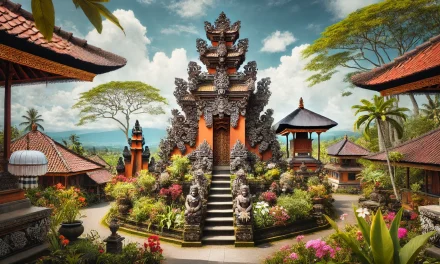Ah, Bali! The Island of the Gods. With its stunning beaches, lush rice paddies, and, of course, breathtaking waterfalls, it’s no wonder that travelers flock to this paradise. However, if you’re planning a trip to experience the beautiful waterfalls of Bali, timing is everything. Let’s dive into the best times to visit Bali’s hidden gems—waterfalls that are waiting to cascade into your heart and Instagram feed.
The Allure of Balinese Waterfalls
Before we get into the specifics of when to visit, let me share a little story. The first time I ventured to Bali, I remember being mesmerized by the Kanto Lampo Waterfall. Nestled in the hills, its water tumbled down smooth stones like a silk ribbon, surrounded by lush greenery. It was a perfect spot for a refreshing dip, and I couldn’t resist the urge to take a plunge. But oh, how that experience could have differed if I had chosen the wrong time to visit!
The Seasons of Bali
Bali has two main seasons: the dry season (April to October) and the rainy season (November to March). While Bali is a tropical paradise year-round, these seasons can significantly affect your waterfall experience. Here’s a breakdown:
The Dry Season (April to October)
– Best for Clarity and Accessibility: This is generally considered the best time to visit Bali waterfalls. The weather is sunny, and waterfalls like Tegenungan and Munduk are easily accessible. I remember hiking to Sekumpul Waterfall during this time. The path was dry, the sun was shining, and the water was clear as crystal.
– Ideal for Photography: If you’re an aspiring photographer (or just love posting on social media), the dry season provides the best light and less muddy paths, so you can capture that perfect shot. I was lucky enough to click some Insta-worthy photos that I still share today.
The Rainy Season (November to March)
– Lush Scenery: One downside to visiting waterfalls in the rainy season is the muddy trails, but here’s the upside: the scenery is more lush and green than you can imagine. If you don’t mind a little rain, you will be rewarded with vibrant vistas. I remember visiting Gitgit Waterfall during a light mist; it felt like a scene from a movie!
– Water Volume and Vigor: Waterfalls like Nungnung are at their most powerful during the rainy season. The roaring flow can be exhilarating, and you might even find yourself standing a little further back to avoid the splash! Just make sure to check the local weather, as heavy rains can sometimes lead to floods or landslides, making certain paths unsafe.
Personal Experiences to Guide You
Morning vs. Afternoon Visits
Based on my travels, I’ve also noticed the timing of the day matters. Early mornings (between 7 AM and 9 AM) are optimal for visiting waterfalls. Not only can you beat the crowds, but the sunlight is softer, creating a magical glow over the falls. On one occasion, I arrived at Tegenungan at 8 AM and had the entire place to myself for about 30 minutes. It was pure bliss!
Afternoons can be beautiful too, but as the sun rises higher, the light can become harsh, and you might find yourself dodging groups of visitors who flock in for the day.
Weekday vs. Weekend
If your travel plans are flexible, try to visit waterfalls during the week. On weekends, local families visit these spots, especially if they are nearby urban areas. I once hiked up to a waterfall on a Saturday, and it felt more like a picnic party than an escape into nature. The atmosphere was festive, but it wasn’t the serene retreat I was hoping for.
Practical Travel Tips
– Getting Around: Renting a scooter is a popular way to explore Bali, providing the freedom to visit multiple waterfalls in a day. Just make sure you are comfortable riding in local traffic!
– Dress Appropriately: Wear comfortable shoes, and if you plan to swim, pack a swimsuit! A quick-dry towel is a lifesaver as well. Trust me; you’ll want to take a dip after your hike.
– Stay Hydrated: The heat can sometimes sneak up on you, especially during the dry season. Bring along a water bottle, and if you forget, you can always buy fresh coconut water from local vendors—a delicious and refreshing pick-me-up.
– Respect Nature: Always follow local guidelines and respect the environment. Leave no trace and help keep these stunning locations pristine for future visitors.
In Conclusion
So, when is the best time to visit Bali waterfalls? Ultimately, it depends on what experience you seek. If you want lush greenery and powerful cascades, then the rainy season is your best bet. But if you’re after clear paths and sunny locations for perfect photos, aim for the dry season. Remember my adventure at Kanto Lampo? Every visit is unique, shaped by the weather, time of day, and the season. Whichever time you choose, I assure you that the charm of Bali’s waterfalls will leave a lasting impression—one that you’ll want to relive time and again.Safe travels, and may the waterfalls of Bali wash away your worries!






